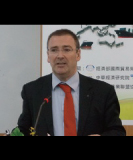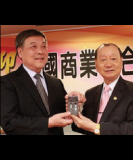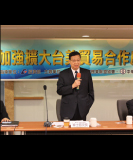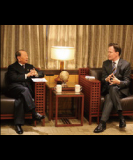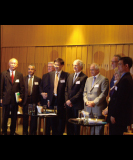You are browsing > Service Trade > Trade Info
WTO report shows members moving to facilitate imports even as trade restrictions remain highWTO
While import-restrictive measures introduced by WTO members continued to affect a growing share of global trade, the Director-General’s latest mid-year report on trade-related developments presented to members on 24 July also indicates a shift towards import-facilitating measures, including products related to the COVID-19 crisis. Between mid-October 2019 and mid-May 2020, WTO members implemented 363 new trade and trade-related measures, 198 of them trade-facilitating and 165 trade-restrictive. Most of them, 256 (about 71 per cent) were linked to the pandemic.
***Report to the TPRB from the Director-General on Trade-Related Developments***
"The report makes clear that a substantial share of world trade continues to be affected by new and accumulated import-restrictive measures, which is cause for concern at a time when economies will need trade to rebuild from the effects of the COVID-19 crisis," said Director-General Roberto Azevêdo, who presented the report to WTO members. "On a more positive note, the report shows that members also introduced import-facilitating measures on an impressive scale, and have started to scale back trade restrictions introduced earlier in the pandemic,” he added.
The Director-General's full speech to launch the report is available here.
The report, which was reviewed at a meeting of the WTO’s Trade Policy Review Body, notes that 56 new trade-restrictive measures not related to the pandemic were implemented between mid-October 2019 and mid-May 2020 - mainly tariff increases, import bans, exports duties and stricter exports customs procedures. The new import restrictions covered traded merchandise worth an estimated USD 423.1 billion, the third-highest value since October 2012. WTO estimates indicate that the cumulative trade coverage of import-restrictive measures implemented since 2009, and still in force, amounts to USD 1.7 trillion or 8.7 per cent of world imports. This figure has grown steadily since 2009, both in value terms and as a percentage of world imports.
Even if trade restrictions remain widespread, the report also finds evidence of WTO members moving towards trade-facilitating policies across sectors during the review period, with 51 new trade-facilitating measures not related to COVID-19 implemented. These measures mainly included the elimination or reduction of import tariffs, the elimination of import taxes, the simplification of customs procedures and the reduction of export duties.
The trade coverage of non COVID-19 related import-facilitating measures was estimated at USD 739.4 billion, which is significantly higher than the USD 544.7 billion recorded in the previous report (from mid-May to mid-October 2019) and represents the second-highest figure since October 2012.
The report shows that by mid-May 2020 WTO members implemented 256 trade and trade-related measures explicitly linked to the COVID-19 pandemic, with export bans accounting for the totality of the pandemic-related export restrictions recorded. These COVID-19 related measures appeared to have come in two clearly identifiable waves. In the early stages of the pandemic, several of the measures introduced restricted the free flow of trade but as of mid-May 2020, 57 per cent of all measures were of a trade-facilitating nature. In early May, some members began to phase out export constraints, targeting products such as surgical masks, gloves, medicine and disinfectant. There is further evidence that a roll-back of other trade and trade-related measures taken in the early stages of the pandemic is also taking place. For instance, around 28 per cent of the COVID-19-specific trade-restrictive measures implemented by WTO members and observers had been repealed by mid-May.
Prepared against the backdrop of COVID-19, the report does not yet reflect the full impact of the pandemic on trade. According to WTO data published on 22 June, estimates for the second quarter of 2020 indicate a year-on-year drop in world trade of around 18 per cent.
Regarding general economic support measures, only 21 per cent of WTO members notified these actions in response to the Director-General's request for information. From the limited information received, and from the research undertaken by the WTO, the current review period confirmed that WTO members appeared to continue to implement such measures as part of their overall trade policy.
Separate from these longstanding policies, the review period saw an unprecedented number of emergency support measures introduced by members in response to the economic and social turmoil caused by the COVID-19 pandemic. Most of these measures appeared to be of a temporary nature. These include grants, monetary, fiscal and financial measures, measures targeting micro, small and medium-sized enterprises (MSMEs), loans, credit guarantees and stimulus packages. Several measures were one-off grants while others included disbursements staggered over a few months and up to three years. Some of these measures form part of larger emergency rescue programmes worth several trillion US dollars.
Key findings
- This report covers new trade and trade-related measures implemented by WTO members between 16 October 2019 and 15 May 2020. This period included the start of the COVID-19 pandemic, which has already delivered an almost unprecedented shock to the global economy and caused significant social disruption. Although the full impact of the pandemic is not yet reflected fully in trade statistics, it is expected to be very substantial.
- In its trade forecast of 8 April 2020, the WTO considered two scenarios for the crisis, one relatively optimistic and the other more pessimistic. Under the optimistic scenario, the volume of world merchandise trade would fall by 12.9 per cent and world GDP would decline by 2.5 per cent. Under the pessimistic scenario, trade would contract by 31.9 per cent and GDP would shrink by 8.8 per cent. As at mid-June, preliminary trade data and trade-related indicators for the first half of 2020 were more consistent with the optimistic scenario than the pessimistic one, but actual outcomes could easily fall within or even outside of the forecast range, depending on how the crisis unfolds.
- World trade was already slowing before the pandemic struck, weighed down by heightened trade tensions and slowing global economic growth. Merchandise trade was down 0.1 per cent in volume terms in 2019, marking the first decline since 2009. Trade growth also slowed in nominal terms in 2019, as the dollar value of merchandise exports fell by 3 per cent to USD 18.89 trillion. Although commercial services exports increased by 2 per cent to USD 6.03 trillion in 2019, the pace of growth was down sharply from 9 per cent in the previous year.
- Overall, WTO members and observers implemented 363 new trade and trade-related measures during the review period, of which 198 were of a trade-facilitating nature and 165 were trade-restrictive. Seventy per cent of these measures (256 in total) were linked to the COVID-19 pandemic. Of these 256 measures, 147 facilitated trade and 109 restricted trade. In the early stages of the pandemic, several of the measures introduced by WTO members and observers restricted the free flow of trade, principally for exports. But as at mid-May 2020, 57 per cent of all COVID-19-related measures were trade-facilitating. Around 28 per cent of the COVID-19-specific trade restrictions implemented by WTO members and observers had been repealed by mid-May.
- Excluding COVID-19-related measures, WTO members and observers implemented 107 trade and trade-related measures during the review period. These included 51 new measures aimed at facilitating trade. The trade coverage of these non-COVID-19-related import-facilitating measures implemented during the review period was estimated at USD 739.4 billion, the second-highest figure for such measures since October 2012. WTO members and observers also put in place 56 new trade-restrictive measures unrelated to the pandemic. The trade coverage for these new import-restrictive measures was estimated at USD 423.1 billion, the third-highest value recorded since October 2012. The trade coverage of import-restrictive measures implemented since 2009, and still in force, continues to increase. It is estimated that 8.7 per cent of world imports (USD 1.7 trillion) is affected by import-restrictive measures implemented since 2009 and still in force.
- All WTO issues regularly covered by this report saw significant activity both before and after the outbreak of the pandemic. During the review period, 239 trade remedy actions were recorded for WTO members. The monthly average of trade remedy actions initiated was slightly higher than the average for the last eight years, while the monthly average of trade remedy terminations was the lowest over the same time span. During the review period, initiations of anti-dumping investigations accounted for around 80 per cent of all trade remedy initiations, which also includes safeguards and countervailing actions.
- In services, most of the new measures introduced by WTO members and observers between mid-October 2019 and mid-May 2020 were trade-facilitating, but a number of new policies appeared to be trade-restrictive, including in areas related to foreign investment and in areas considered strategic or linked to national security. Most of the 99 services measures adopted by WTO members and observers in response to the pandemic appeared to be trade-facilitating.
- WTO members continued to implement general economic support measures as part of their overall trade policy, a fact confirmed by WTO Secretariat analysis despite governments' low response rate with respect to these measures. In addition, WTO members and observers also implemented a large number of emergency support measures in response to the economic and social turmoil caused by the COVID-19 pandemic. Most of the 468 COVID-19-related general economic support measures identified, including monetary, fiscal and financial measures as well as preferential loans, credit guarantees and stimulus packages, collectively worth several trillion US dollars, appeared to be temporary in nature. These emergency support measures are central to governments’ strategies to address the pandemic-induced economic downturn and to prepare the ground for a strong recovery. Regular monitoring of support measures introduced in the context of the pandemic will be important for members to be able to track their evolution and effects as the world exits the health crisis and enters a recovery period.
- WTO members were very active in the Sanitary and Phytosanitary Measures (SPS) and Technical Barriers to Trade (TBT) Committees during the review period, and notified a higher volume of SPS and TBT measures compared to the previous period. Most of the new notifications were submitted by developing members. From 1 February to 15 May 2020, 19 members notified 29 SPS measures taken in response to the pandemic. The nature of most of these measures shifted, from initial restrictions on animal imports and/or transit from affected areas and additional certification requirements, to from April trade-facilitating measures such as the use of electronic certificates for checks. As at 15 May 2020, 14 WTO members had submitted 53 TBT notifications/communications on standards and regulations in response to the COVID-19 pandemic, covering a wide range of products including personal protective equipment, medical equipment, medical supplies, medicines and food.
- WTO members continued to extensively use the Committee on Agriculture review process, and raised a total of 298 questions in relation to members' individual notifications and on specific implementation matters. In relation to the COVID-19 pandemic, three WTO members informed the Committee of four temporary measures to respond to food security threats.
- The report also covers developments in WTO members in trade-related aspects of intellectual property rights (TRIPS). Several members implemented specific IP-related measures aimed at facilitating the development and dissemination of COVID-19-related health technologies, as well as at relaxing procedural requirements and extending deadlines for administrative IP matters.
- Work continued in the first months of 2020 to advance negotiations, particularly on fisheries subsidies, building on the decision taken by members at the 11th Ministerial Conference (MC11). Groups of members also continued to pursue their discussions on other issues, including electronic commerce, investment facilitation, women's economic empowerment, domestic regulation in services, and micro, small and medium-sized enterprises (MSMEs). However, the delegations' ability to engage in detailed negotiations has been constrained by restrictions on movement and the refocusing of priorities to address the COVID-19 pandemic.


